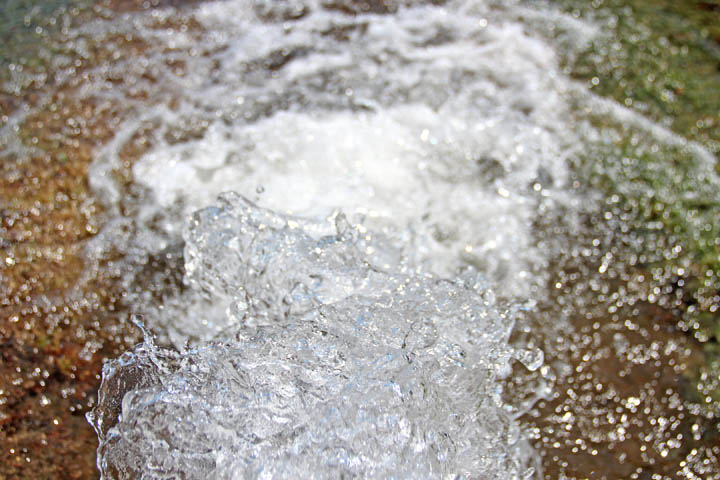
As populations continue to swell on both sides of the Texas-Mexico border and competition for water becomes fiercer between agriculture and municipal users, the Rio Grande Regional Water Authority (RGRWA) is desperately on the hunt for new water sources.
With the help of U.S. Bureau of Reclamation, the RGRWA officials initiated a comprehensive Lower Rio Grande Basin Study in 2011 to determine if brackish groundwater desalination would be a potential alternative source of water to meet the region's long-term and rapidly growing water needs.
The study represented a cooperative project that included the 53 member entities of the RGRWA, the Bureau of Reclamation, Texas water and environmental agencies and the International Boundary and Water Commission (IBWC). The study also included an evaluation of the impacts of climate variability and change on water supply imbalances within the eight-county regions of South Texas.
For the latest on southwest agriculture, please check out Southwest Farm Press Daily and receive the latest news right to your inbox.
Now that a multiyear drought has confirmed prospects for a changing climate, the results of the study warrant a second look at its conclusions concerning the growing need for alternative water sources for the near future.
The region is largely dependent on water sources from the lower Rio Grande. But the vast majority of watershed that resupplies the river comes from Mexico and the run-off of water from the Sierra Madre mountain range. Water deliveries, managed by the bi-national IBWC, are relegated by terms of the International Water Treaty of 1944, more commonly called the U.S.-Mexico Water Treaty. Water from the Amistad and Falcon reservoirs is released through a network of canals managed by 27 individual irrigation districts.
While the supply issues facing the Lower Rio Grande Basin are complex, the history of water availability and the constantly increasing demand for more water has made it even more evident that a time is quickly approaching when the river's resources and its ability to resupply those resources from annual rain events will require more water than the river can provide, making alternative resources to meet the future water needs of the necessary and perhaps sooner than projected.
The results of the two-year study have helped local water planners by identifying brackish water resources across the region that could fulfill those requirements. The study further confirmed that the construction of three desalination facilities may well represent the best option for meeting the needs of a soaring population and addressing a mounting water deficit projected to reach nearly 680,000 acre-feet of water per year (AF/yr) by 2060.
Study uncovered growing water shortage problems
The study reveals the magnitude and frequency of water supply shortages within the study area are already severe and problematic, even before projecting the effects of climate change. The study confirmed projections offered by the Texas State Water Plan, specifically a growing population in the eight-county region that is expected to grow from 1.7 million in 2010 to 4 million by 2060, resulting in the need for an additional 592,000 ac-feet of water per year, or about 35 percent of the total water demand.
The State Water Plan identified strategies to meet those needs, but the Lower Rio Grande Valley water study determined that climate change will likely increase the shortage by an additional 86,438 ac-ft/yr.
While the 2011 water study helped to identify brackish water supplies that could be used for desalination and further recommend that three such desalination facilities would be required to meet the growing need for water in the region, water officials say the real challenge comes in identifying funding to make the facilities a reality.
Funding options
The plan did provide a number of funding possibilities, including assistance from the State of Texas through several existing water programs, including:
The Drinking Water State Revolving Fund
The Rural Water Assistance Fund
State Participation Program
Water Infrastructure Fund
The Economically Distressed Areas Program
The Regional Water Supply and Wastewater Facilities Planning Program
The study concludes that the consequences of inadequate action to address the growing water needs of the region could be devastating, citing the rich agricultural industry of the Lower Rio Grande Valley as an example. The Valley's economy is heavily driven by agriculture. The annual value of crops and citrus grown in the study area is estimated at $50 million and $200 million, respectively.
Texas is the third largest citrus producer and fourth largest sugarcane producer in the United States, most of which is grown in the study area. Other prominent crops produced in the region include cotton, sorghum, and corn.
In addition, urban expansion will vastly increase the demand for water resources. While agriculture may decline as cities demand more rural area for expansion, water needs of a growing population will easily surpass and take precedence over agricultural production.
With the growing complexities in the administration of the U.S./Mexico Water Treaty and the increased demand for water on both sides of the border, officials are suggesting negotiations over water rights by population and industry in both nations will further complicate the distribution and sharing of water resources and will further tax the existing water treaty. Water officials within the region are pushing to bring the recommendations of the 2011 water study to the forefront of regional planning efforts.
About the Author(s)
You May Also Like




